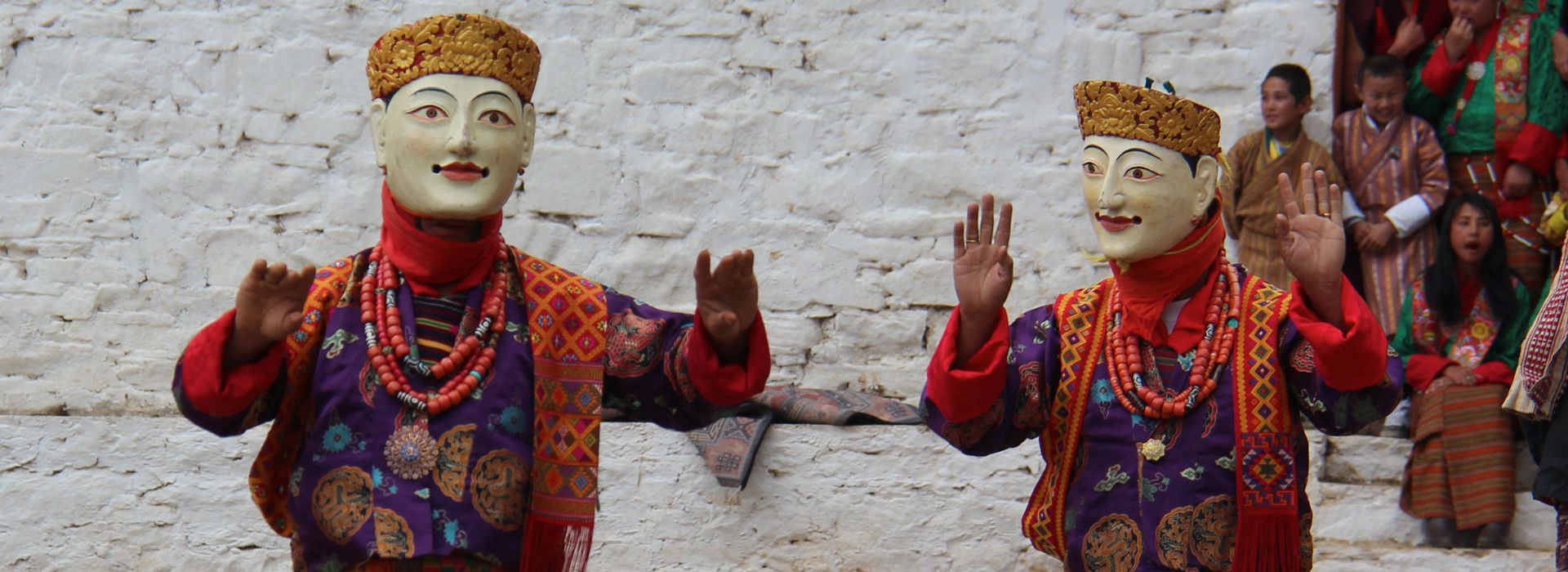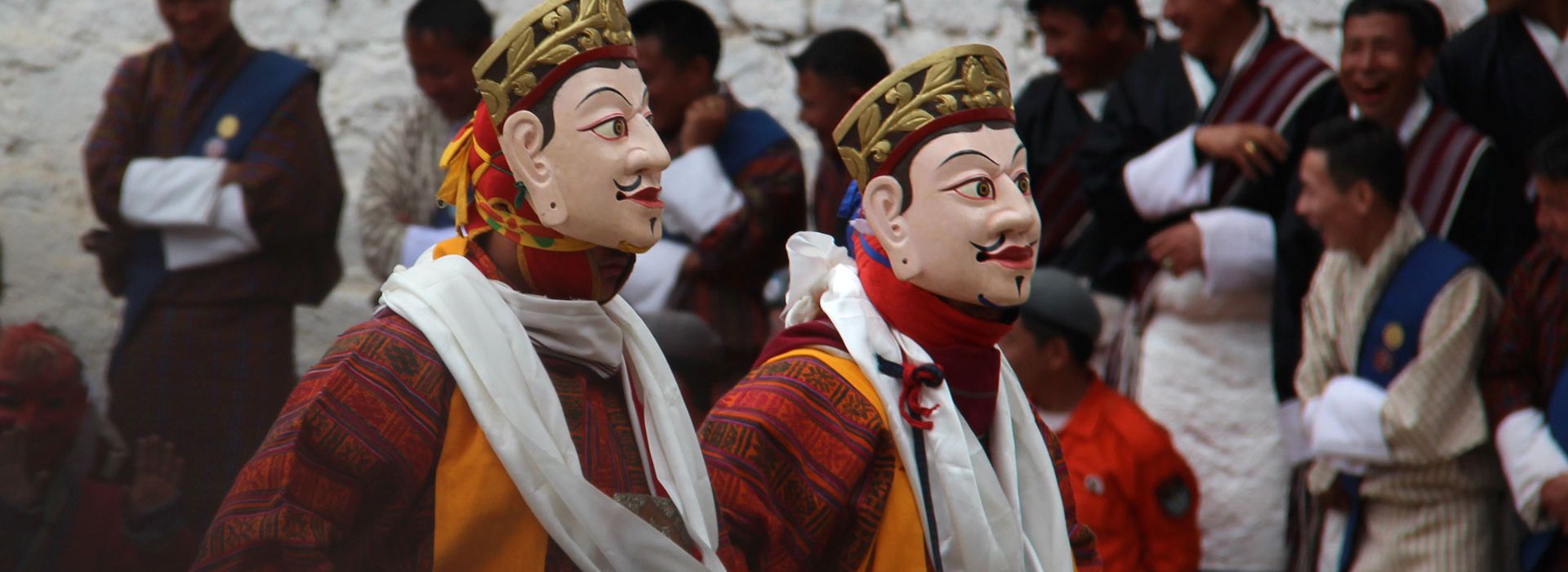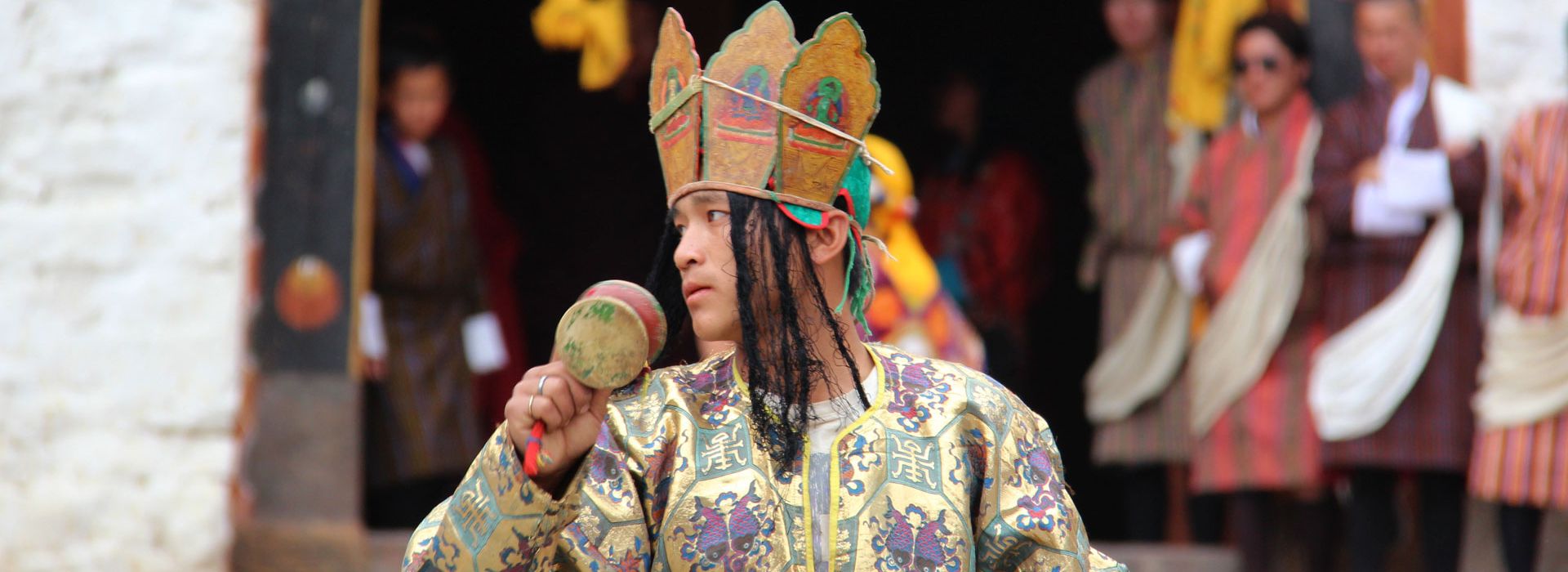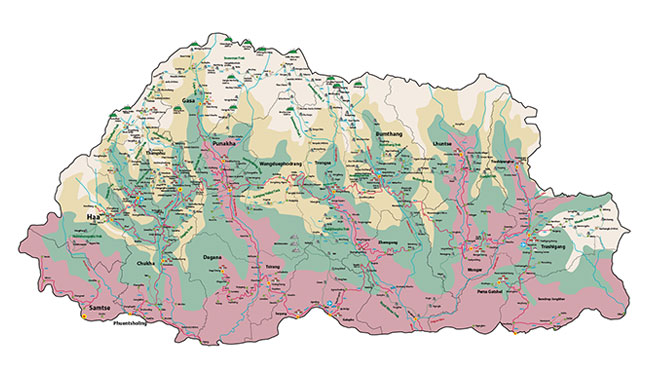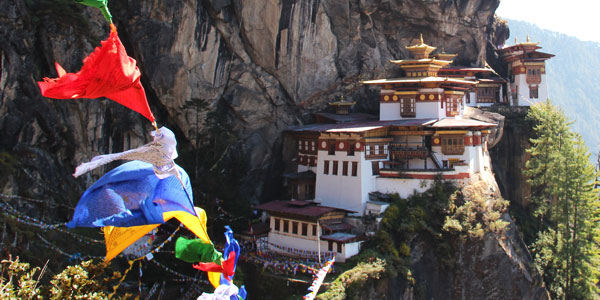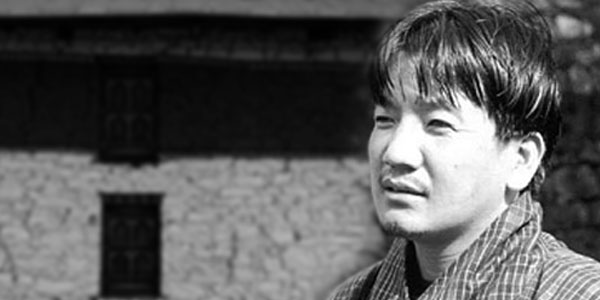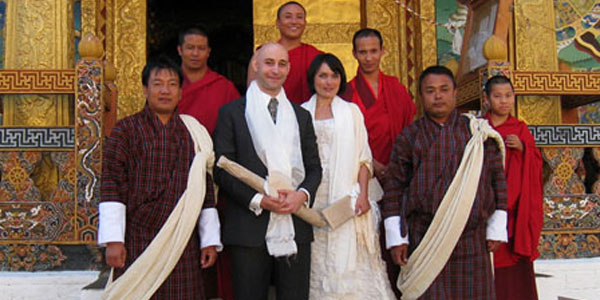Day 01: Bangkok/Kathmandu/New Delhi-Paro (2,250m)-Thimphu
Fly into Paro, a beautiful valley which is an apt introduction to this charming kingdom. Meet your tour guide, and drive along the beautiful road which follows Paro Chhu river bank to Thimphu, the capital city. Along the way, see the Tachog Temple and see an iron chain bridge built in the 14th century. Take a stroll in Thimphu, and absorb Bhutanese culture as you meet, mingle and see everyday life unfurl before you.
Day 02: Thimphu (2,320m)
Today, we see the attractions in and around Thimphu. Our first visit is the Buddha statue, the world’s biggest, at Kuenselphodrang, the place which also affords a nice overview of the city. From here, we move to the Takin Reserve and then to Sangaygang from where we get another perfect view of the sprawling city. We also visit the Textile Academy, the Folk Heritage Museum, the Art Academy, Memorial Stupa, the magnificent Trashi Chhodzong and the Parliament building.
Day 03: Thimphu-Punakha (1,350m)
We drive to the ancient capital at Punakha. Our route follows the famous olden day pass at Dochula (3,050m), a vantage point from where we get stunning view of the awe-inspiring Himalayan peaks. Hereon, we drive downhill, leaving the temperate and alpine zone, to the sub-tropical valleys of Wangdue and Punakha. The highlights of this day is the visit to the “Temple of Fertility” at Lobesa and the gilded castle-fortress of Punakha, touted as the showpiece of Bhutanese architecture.
Day 04: Punakha-Bumthang (2,600m)
We head further interior, into the heartlands of medieval power and present-day spirituality. As we gently ascend through sub-tropical forests to the temperate and alpine belts, we reach our highest point at Pelele pass ((3,140m) from where we see the Black Mountain range. From there, the gradual descent takes us to Chendebji Stupa and then to the massive Trongsa Trong. This castle-fortress is the biggest, built without a single nail, contains some 30 temples and was, in the 19th century Bhutan, the bastion of power – the stronghold of Bhutan’s kings. Further up is the “Watch Tower” which is now designated as the “Museum of Bhutan’s Kings”. From here, we climb to Yotongla Pass (3,551m) and then drive downhill into the sprawling Bumthang valley.
Day 05: Bumthang (2,600m)
Welcome to the spiritual heartland of Bhutan! For Buddhists, this is the place to be but, for others still, it is a region steeped in incredibly absorbing history, myths and legends. This valley of “one thousand plains” is filled with sacred sites, palaces, and temples dating back 1,000 years or more. Every inch of ground is, in fact, considered to be blessed! We begin our day with a visit to the “Castle of White Bird” or Jakar Dzong, and from there to Jampa Lhakhang (Temple of Future Buddha, built in 7th century AD), Kurjey Temple which contains body imprints on a rock of “Second Buddha” Padmasambhava, and Mebar Tsho or the “Burning Lake” in Tang where in the 15th century, “Treasure Revealer” Pema Lingpa took a dive with a burning lamp on his head and emerged our of the lake with the lamp intact bearing a sacred religious “treasure” in his hands. There are lots more to see beyond spirituality: local food, customs, craft, dress, etc.
Day 6: Bumthang (2,600m)
This is the day we have waited for! We visit Jambay Lhakhang to witness probably Bhutan’s oldest mask dances, some ingredients of which do not exist anywhere in Bhutan. One item in particular stands out! Around midnight, stark naked men donning masks take over the dance arena and perform a choreographed sequence of ancient dances. The story goes thus: while the temple itself was built in the 7th century, the surrounding areas continued to be tormented by evil spirits. In utter desperation, the then King Sindhu Raja beseeched upon the great Indian saint Padmasambhava to come and subdue the spirits. The saint obliged and performed several dances that had the evil spirits spellbound and, in so doing, they were caught unawares and subdued. These same dances are being performed today, some 1,200 years after the episode first unfurled.
Day 7: Bumthang-Phobjikha (3,000m)
From Bumthang we retrace our journey and enter the glacial valley of Phobjikha (3,500m.) Here we see probably Bhutan’s biggest stretch of plains in the north which has been adopted by the elegant but endangered Black-Necked Crane as its winter home. There is an air of deep spirituality about this place as well as the iconic Gangtey Monastery, the seat of the revered Peling Branch of Vajrayana Buddhism, is located atop a mound here.
Day 8: Phobjikha-Thimphu
We journey back to Thimphu via Wangdue valley. It is known as the valley of “ornamental speech” because of the local people’s innate ability to come up with verses that are elegant, poetic and meaningful. This valley was once governed from Wangdue Dzong which, unfortunately was destroyed by fire and is being entirely rebuilt. The journey is also remarkable in that we pass through varying landscapes of immense beauty, adorned with numerous shades and hues of alpine flowers.
Day 9: Thimphu-Paro
This is our last brief sojourn in Thimphu. We spend time doing some shopping continue to Paro. In Paro, we visit the ruined “Fortress of Victory” at Drukgyal which, in 1644, repelled a Tibetan invasion which could have seriously compromised the sovereignty of Bhutan. Our last stopover for the day is the Kyichu Temple, built in the 7th century and thus the oldest and one of the most sacred in Bhutan. In popular myth, this temple was built to pin down the right knee of a giant ogress which was lying spread-eagled across the entire Himalayas.
Day 10: Paro
Take a deep breath! Today, we hike up to the ‘Tiger’s Nest’, a literal translation of Tak-tshang. This monastery edifice is precariously built on a sheer wall of granite cliff some 1,000 metres above the valley floor. Some say, it was built with the help of celestial nymphs in the 17th century for, otherwise, it is beyond human feat. This temple complex houses many caves, one among which is the site where the great Tantric saint – worshipped in the Himalayan Buddhist world as the “Second Buddha” – came riding on a tigress in the 8th century to destroy evil spirits and anoint the grounds to spread the Buddha, Dharma and Sangha.
Day 11: Paro-Departure
Farewell Bhutan, farewell Happy Kingdom. We take a short drive to the airport for our next destination!
